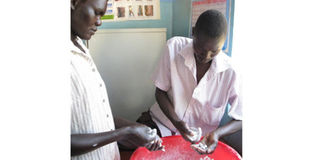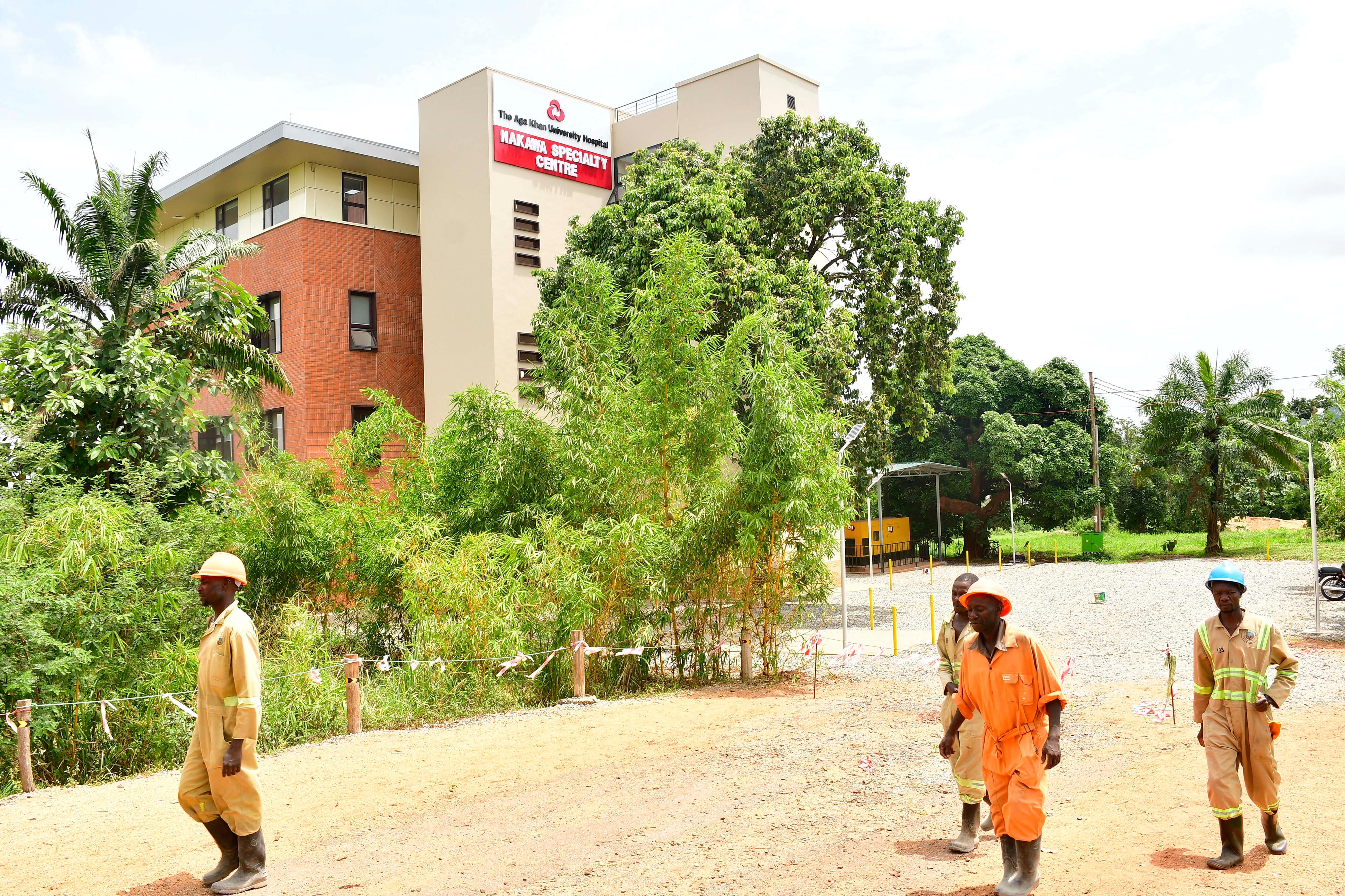Government recruits 15,000 S.4 leavers as health workers

Volunteers pack drugs at Amach Health Centre IV in Lira District in 2012. PHOTO BY BILL OKETCH
Kampala- The ministry of Health will recruit 15,000 O-Level leavers as community health extension workers (CHEWS) in the initial phase to provide basic healthcare in villages in the next three years.
The move is in line with the ministry’s initiative to promote its new healthcare delivery model that focuses more on disease prevention to decongest public hospitals and health facilities in rural areas.
Ms Sarah Opendi, the Minister of Health in charge of General Duties, said the extension workers, who starting this month, will be trained how to identify sick people, conduct home visits and community outreach services such as carrying out routine immunisations, HIV counselling and testing among others.
“We have picked up 13 districts in northern Uganda, especially those with poor health indicators to pilot the programme. We hope to enroll it to other districts countrywide but are still constrained by funds as we so far have Shs3b from this financial year’s budget,” Ms Opendi said.
She said the ministry is now making preparations for the policy but it will require Cabinet approval to allow the deployment of CHEWS.
Training
Training of trainers has already been conducted in seven districts: Lira, Otuke, Dokolo, Nwoya, Gulu, Omoro and Mayuge.
A total of 137 men and women aged between 20 to 35 have already been selected from 89 parishes in Lira to participate in the programme.
Ms Grace Atim, the Lira District health educator who is coordinating the programme in the area, said the CHEWs will be vetted by the Gombolola [sub-county) internal security officers.
The sub-county chiefs and officials in charge of health centre IIIs will supervise the recruitment.
“This financial year, 1,500 people will be recruited, 3,000 in the next financial year, 6,000 in the 2020/21 financial year and 4,500 in 2021/22,” Ms Atim told Daily Monitor on Wednesday.
The recent figures by Uganda National Examinations Board show that about 300,000 students sit O-Level examinations every year.
Of these, 90 per cent on average pass to qualify for certificates but those who cannot proceed to A-Level are eligible to pursue courses in Business Technical Vocational Education Training, Teaching Training Colleges and other institutions that offer various certificate courses.
The CHEWs will be trained for six months on health issues before they are deployed to their respective parishes to work with qualified health workers.
They will be paid $100 (about Shs370,000) as a monthly allowance unlike their predecessors, the village health teams (VHTs), who have been working as volunteers.
There were also no specific academic qualifications for VHTs as long as one could read and write he/she would qualify for the job.
Their major task was community mobilisation for routine immunisation and distribution of medicine for neglected tropical diseases.
The VHTs will be phased out but those with the requisite O-Level qualifications will be upgraded to CHEWS.
Remuneration
The monthly allowance paid to CHEWs is higher than the average monthly salary for the lowest health worker and lowest primary school teacher who are paid Shs228, 612 and Shs313, 832 respectively as per the new public servants salary structure for the current financial year.
Dr Christopher Oleke, the CHEW national programme coordinator in the Ministry of Health, said the CHEWS will also administer de-worming tablets to children and treat malaria and diarrhoea cases in the community.
“We want them to ensure that the communities and families access the necessary health services. Secondly, we want people who can effectively educate our people on issues of disease prevention, promotion of personal hygiene and sanitation in the homes,” Dr Oleke said by telephone on Wednesday.
“We want them to help us collect necessary data from the community like the number of malnourished children; data on some diseases; how many people are affected by this kind of diseases and reporting the occurrence of strange diseases in the community to the health facilities,” he added.
Dr Oleke said they had expected to cover all the nine districts in Lango sub-region, but because of lack of resources, they will cover only three districts of Lira, Otuke and Dokolo.
The recruitment underlines the staffing shortage in the health sector. Although WHO recommends doctor-patient ratios of 1:1000 and 1: 600 by 2020, the ministry of Health estimates that the ratio in Uganda currently stands at 1:24,000.
The 2015/2016 annual Health Sector performance review shows that Uganda has a staffing shortage of anesthetic officers stands at 73 per cent, pharmacists at 60 percent, nurses at 51 percent and midwives at 25 percent.
The 2016/2017 Annual Health Sector Performance Report also indicates the overall staffing gap of health workers in Uganda stands at 27 per cent.




